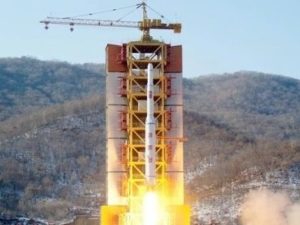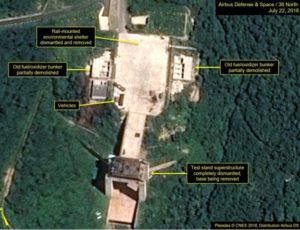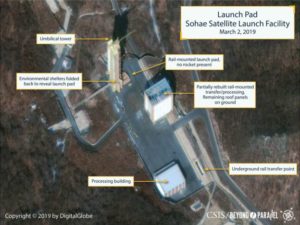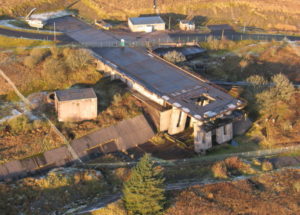
Reports that the North Koreans have started to rebuild their missile test facilities have caused some concern in recent days. The information has apparently come from South Korean agencies and, according to a number of major news agencies, images have been provided by US-based think-tanks (amongst others) that purport to show the sites being restored.
The BBC is amongst those that have carried these reports, making the additional point that the North Koreans have apparently moved with great speed since the breakdown in talks between Messrs Kim and trump. In an article on its website, the BBC provided two images which are supposed to be evidence of the rebuilding at the Sohae test area in North Korea. However, after taking a look at the report, it was apparent to TMT that the story and the supporting images did not tally.
The two photos are supposed to show how a test site that was being dismantled after the thawing in relations between the US and North Korea has now been refurbished. In one image, shown below, buildings are visible with their roofs removed and some missile gantries with the top half of their structure demolished. In addition, the whole area of the site looks somewhat dilapidated – even by local standards.

The recent rebuilding work is supposedly shown in the second image (shown below), which is clearly a more modern-looking test pad. Tarmac and modern buildings seem to have replaced what looks like an old, cracked concrete pad and 1950s-looking bunkers. Indeed, the contrast is so marked that it seemed rather unlikely that even high-speed, forced-labour DIY- handiwork could explain the major differences in the two images.

In fact, as a visit to Google Earth then confirmed, the photos on the BBC site are of two different sites – and with different roles.
Photo No 1 is actually an old missile-engine test site with a tower to hold the engines and an exhaust blast tunnel below to direct gases away from the test pad. These are very similar in format to the UK’s Blue Streak engine test site at Spadeadam, (shown below). But it was not intended to be a launch pad as such – merely to hold an engine while it is running at full-chat. This is why, after Mr Kim announced the demolition of part of the site of Sorea, some dismissed it as being a publicity stunt since the test pad was no longer required; the engines were fully developed, needed no more testing, and were ready for production.

Photo No 2 is of another test pad on the Sorea site which has been in existence for many years as is proven by the historic imagery available on Google Earth. Indeed, if you go back a few years using the historic-image facility on Google Earth, there seem to have been little major change in the last few years. The launch gantry has been on that pad for a decade or so, and the main buildings seen at the other end of the hard-standing, referred to as a “Processing building” in the photograph, had been begun by 2015. Next to that building is a third major structure that seems a tad curious.
The images on the BBC website describe this structure as being “Partially rebuilt rail-mounted transfer/processing” with bits of material lying around on the ground – presumably waiting to be added to the structure. However, the “rail-mounted” bit is the give-away, for in fact, as a look at the Google Earth images from 2017 show, this is not a new building. In 2017 it was at the other end of the launch-pad and has merely been moved closer to the launch gantry in the meantime. It seems that this is not a conventional building, but some sort of movable framework that is placed over activity or other workings, rather like a movable scaffolding used to cover a house when the roof is being worked-on.
It is of course entirely possible that the structure has been moved to cover up some new building works on the launch pad - but TMT is certainly not in a position to make a judgement about that sort of thing. Otherwise, and based upon views available to the general public, there seems to be little or no evidence of a massive building programme following the collapse of the recent talks.
That is not to say that there has been no activity at the site, of course. If South Korean agencies categorically state that work has been going on, then we have to take that on trust – though we should also be cautious about accepting everything said by those with a partisan interest in such matters.

Comments on Are the North Koreans truly re-building their rocket sites?